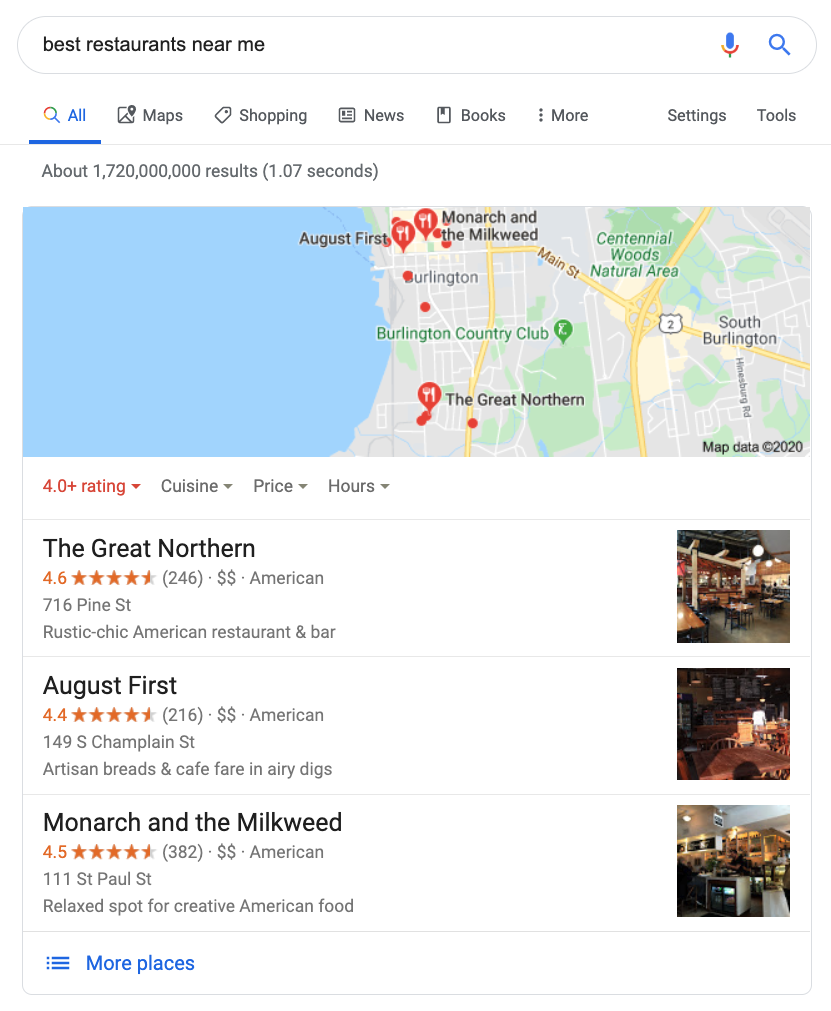Proving Fault in a Car Accident
Have you ever wondered how fault is determined in a car accident? It’s not always as straightforward as it seems. There are many factors to consider, and the process can be complex. In this article, we’ll explore the ins and outs of proving fault in a car accident, so you can be prepared if you’re ever involved in one.
Fault
Fault in a car accident refers to the legal responsibility for causing the crash. When determining fault, courts consider several factors including:
- Driver behavior: Speeding, reckless driving, and distracted driving can all contribute to fault.
- Traffic laws: Violating traffic laws, such as running red lights or stop signs, can also lead to fault.
- Vehicle condition: If a car is defective or not properly maintained, it can increase the likelihood of an accident.
- Environmental factors: Poor weather conditions, such as rain or snow, can make it more difficult to drive safely.
- Witness statements: Witnesses can provide valuable information about what they saw leading up to and during the accident.
Determining fault can be complex, but it’s crucial for assigning liability and compensating victims. If you’re ever involved in a car accident, it’s important to speak with an attorney to discuss your rights and options.
How to Prove Fault in a Car Accident
If you’ve been in a car crash, it’s easy to feel lost and overwhelmed. You’re probably hurting, stressed about dealing with insurance companies, and maybe even wondering who’s at fault for the whole mess.
One of the most important steps in getting fair compensation for your injuries is proving fault. But how do you do that? Here’s a breakdown of the key steps you need to take.
Establishing Fault
In any car accident, there are three elements that must be proven to establish fault: negligence, causation, and damages. Negligence is the legal term for carelessness or recklessness that causes harm to another person. Causation means showing that the defendant’s negligence directly led to your injuries. And damages refer to the losses you’ve suffered, such as medical bills, lost wages, and pain and suffering.
Causation
Proving Causation: Unraveling the Chain of Events:
Establishing causation in a car accident case is like unraveling a tangled ball of yarn. It involves piecing together evidence to show that the defendant’s actions directly led to your injuries. Here’s a closer look at the key steps:
-
Analyze the Crash: Start by examining the physical evidence, such as the damage to the vehicles, skid marks, and the surrounding environment. These clues can help paint a picture of how the accident occurred.
-
Review Witness Statements: Gather statements from anyone who witnessed the accident. Their accounts can provide valuable insights into the events leading up to the crash.
-
Consult Experts: In complex cases, an accident reconstruction expert can be brought in to analyze the evidence and provide an opinion on what happened. Their expertise can help establish a clear link between the defendant’s negligence and your injuries.
-
Rule Out Other Factors: It’s crucial to consider any other factors that may have contributed to the accident, such as road conditions or the actions of other drivers. Ruling out these factors strengthens the case for causation.
By carefully piecing together the evidence and eliminating alternative explanations, you can build a strong case that the defendant’s negligence was the direct cause of your injuries.
Proving Fault in a Car Accident: A Guide to Establishing Liability
When you’re involved in a car accident, the aftermath can be overwhelming. One of the most important steps you can take is proving fault, which is crucial for determining who is liable for the damages. Here’s a comprehensive guide to help you understand the process and gather evidence to support your claim:
Negligence: The Foundation of Fault
Negligence is a legal concept that holds individuals accountable for their actions that result in harm. In a car accident, negligence can be proven by establishing that:
- The other driver had a duty of care to drive reasonably.
- They breached that duty by violating traffic laws or acting recklessly.
- Their breach of duty caused the accident and your injuries.
Evidence to Prove Negligence
To support your claim of negligence, you can gather various types of evidence:
- Eyewitness accounts: Statements from witnesses who observed the accident can provide valuable information about the events leading up to and during the collision.
- Police report: The police report will detail the officer’s observations and any statements made by the drivers involved. It may also include diagrams or measurements of the accident scene.
- Medical records: Documentation of your injuries and medical expenses can help demonstrate the severity of the accident and the extent of your damages.
- Photographs: Photographs of the accident scene, vehicle damage, and any visible injuries can provide visual evidence to support your claim.
- Cell phone records: If you believe the other driver was distracted by their phone, obtaining their cell phone records can prove their negligence.
Contributory Negligence: Sharing the Blame
In some cases, you may bear some responsibility for the accident. This is known as contributory negligence. The courts will determine the percentage of fault attributed to each party, impacting the amount of compensation you’re entitled to receive.
Seeking Legal Help
Proving fault in a car accident can be complex, especially if the other driver disputes liability. Consulting with an experienced car accident attorney can guide you through the process, help you gather evidence, and advocate for your rights. They can also assist you in negotiating with insurance companies and filing a lawsuit if necessary.
Proving Fault in a Car Accident: A Guide to Establishing Liability
When it comes to car accidents, determining who is at fault is crucial for assigning liability and seeking compensation. Proving fault in a car accident can be a complex process, but it is essential for protecting your legal rights. Here’s a comprehensive guide to help you navigate this issue:
Causation
Causation involves demonstrating that the negligent actions of another party directly and proximately caused your accident. This means establishing a clear link between the fault and the resulting harm. It’s not enough to show that someone was negligent; you must also prove that their negligence caused your specific injuries and damages.
Negligence
Negligence is the failure to exercise the care that a reasonable person would under similar circumstances. This can take many forms, such as speeding, failing to yield, or ignoring traffic signs. To prove negligence, you must show that the other driver breached their duty of care and that this breach caused your accident.
Comparative Fault
In some states, the doctrine of comparative fault applies. This means that both parties involved in an accident may share responsibility for causing it. Your compensation may be reduced in proportion to your degree of fault. For instance, if you were speeding by 10 mph and the other driver was speeding by 20 mph, you may be assigned 30% of the fault, resulting in a reduction of your compensation by that amount.
Evidence
Gathering evidence is crucial for proving fault in a car accident. This can include police reports, witness statements, medical records, and photographs of the scene. You should also obtain the other driver’s insurance information and contact your own insurance company promptly. Prompt action can help preserve evidence and strengthen your case.
Legal Representation
If you have been involved in a car accident, it is wise to seek legal representation. An experienced attorney can guide you through the legal process, gather evidence, negotiate with insurance companies, and advocate for your rights. They can help you maximize your compensation and hold the at-fault party accountable.
Proving Fault in a Car Accident: An Essential Guide
Establishing fault is paramount in car accident claims. When you’ve been involved in one, the stakes are high, and navigating the legal labyrinth can be daunting. But don’t fret, for we’ve got you covered with this comprehensive guide on proving fault in a car accident.
Police Reports
Like a detective on the case, the police report is your first line of defense. It’s an official record of the accident, documenting the scene, injuries, and statements from both drivers and witnesses. However, it’s not the holy grail, as discrepancies and inaccuracies can sometimes creep in. That’s why it’s crucial to compare it with other evidence and corroborating accounts.
Eyewitness Testimony
Eyewitnesses are like puzzle pieces that help complete the picture of the accident. Their unbiased observations can be invaluable. Seek out witnesses who witnessed the crash firsthand and can provide objective accounts of events. Their statements can corroborate your version and paint a clearer picture of who’s at fault.
Physical Evidence
Physical evidence doesn’t lie. Damage to vehicles, skid marks, and debris at the accident scene tell a story without words. These tangible clues can help reconstruct the events leading up to the accident and establish fault. Make sure to document and preserve this evidence thoroughly.
Photos and Videos
Pictures worth a thousand words, and in car accident cases, they can be even more valuable. If you’re able, take photographs and videos of the accident scene, damage to vehicles, and any visible injuries. These visual aids can serve as powerful evidence and help support your claims.
Expert Testimony
When the evidence is inconclusive or technical issues arise, expert testimony can be like a guiding light. Accident reconstructionists, engineers, and medical professionals can provide specialized insights and opinions based on their knowledge and experience. Their expertise can strengthen your case and help establish fault.
Damages
Damages are the losses you’ve suffered as a result of the accident, and they can be substantial. These include medical expenses for treatment and rehabilitation, property damage to your vehicle, and intangible losses like pain and suffering, emotional distress, and lost income. Quantifying and documenting these damages is crucial for seeking fair compensation.
Additional Tips for Proving Fault:
- Act Quickly: Time is of the essence. Gather evidence, contact witnesses, and document everything promptly to avoid losing vital information.
- Stay Calm and Collect: Adrenaline can cloud judgment. Stay composed and focus on gathering accurate information.
- Consult an Attorney: Legal representation can provide invaluable guidance and advocate for your rights throughout the process.
Remember, proving fault in a car accident requires a meticulous gathering of evidence and a strategic approach. By following these steps, you can effectively establish liability and seek the compensation you deserve.
Proving Fault in a Car Accident
Car accidents are a pain in the neck. They’re stressful, time-consuming, and expensive. And if you’re not careful, you could end up paying for someone else’s mistake.
That’s why it’s important to know how to prove fault in a car accident. If you can show that the other driver was at fault, you’ll be much more likely to get the compensation you deserve.
Gathering Evidence
The first step in proving fault is gathering evidence. This can include:
- Police reports: These reports will contain information about the accident, including the names of the drivers involved, the time and location of the accident, and any witnesses.
- Witness statements: Statements from witnesses can provide valuable information about what happened.
- Photographs: Photos of the accident scene, the damage to the vehicles, and any injuries can help to prove your case.
- Medical records: Medical records can document your injuries and treatment.
Proving Negligence
Once you have gathered evidence, you need to prove that the other driver was negligent. Negligence is defined as a failure to exercise reasonable care. In other words, the other driver must have done something that a reasonable person would not have done, or failed to do something that a reasonable person would have done.
There are four elements of negligence:
- Duty of care: The other driver owed you a duty of care. This means that they had a responsibility to drive safely and not cause you harm.
- Breach of duty: The other driver breached their duty of care by driving negligently.
- Causation: The other driver’s negligence caused your injuries.
- Damages: You suffered damages as a result of your injuries.
Comparative Fault
In some jurisdictions, comparative fault principles apply, whereby both parties may share responsibility for an accident; liability is then apportioned based on the degree of fault. For example, if you are found to be 20% at fault for an accident, you will only be able to recover 80% of your damages.
Contributory Negligence
In some jurisdictions, contributory negligence is a complete defense to a negligence claim. This means that if you are found to be even 1% at fault for an accident, you will not be able to recover any damages.
Damages
If you are successful in proving fault, you may be entitled to damages. Damages can include:
- Medical expenses: This includes the cost of your medical treatment, including doctor’s visits, hospital stays, and medication.
- Lost wages: If you were unable to work due to your injuries, you may be able to recover lost wages.
- Pain and suffering: This includes compensation for the physical and emotional pain and suffering you have experienced.
- Property damage: This includes the cost of repairing or replacing your vehicle.
Getting Help
If you have been involved in a car accident, it is important to seek legal help. An attorney can help you gather evidence, prove fault, and get you the compensation you deserve.
Proving Fault in a Car Accident: A Guide to Gathering Evidence
Establishing fault in a car accident is crucial for determining liability and securing compensation. The burden of proof typically falls on the plaintiff, who must gather compelling evidence to support their case.
Evidence
Amassing evidence is the cornerstone of proving fault. Accident reports filed by responding officers provide an initial account of the incident, including details such as vehicle damage, witness observations, and the officer’s conclusions. Witness statements from individuals who observed the accident offer firsthand accounts of the events that unfolded. Medical records document the extent of injuries sustained, while expert testimony from accident reconstruction specialists or medical professionals can provide insights into the cause of the accident and the severity of the injuries.
Witness Statements
Witness statements are invaluable in establishing fault. They provide an unbiased perspective of the accident, as witnesses are typically not directly involved in the incident. Their observations can corroborate other evidence, such as skid marks or traffic camera footage, and help reconstruct the events leading to the collision.
Medical Records
Medical records provide concrete evidence of the injuries sustained in the accident. They document the extent of the injuries, the treatment received, and the prognosis for recovery. This information is crucial for determining the severity of the injuries and the associated medical expenses.
Physical Evidence
Physical evidence such as skid marks, debris, and vehicle damage can provide valuable insights into the circumstances surrounding the accident. Skid marks, for instance, can indicate the speed and direction of the vehicles involved, while debris can help determine the point of impact. Vehicle damage can also shed light on the sequence of events and the force of the collision.
Expert Testimony
In complex cases, expert testimony may be necessary to interpret technical evidence and provide insights into the cause of the accident. Accident reconstruction specialists can analyze factors such as vehicle dynamics, speed, and impact forces to determine how the accident occurred. Medical professionals can provide expert opinions on the severity of the injuries and the prognosis for recovery.
Burden of Proof
In most car accident cases, the plaintiff bears the burden of proving fault. They must present sufficient evidence to establish that the defendant was negligent or reckless in their actions and that their negligence caused the accident and the resulting injuries. Proving fault can be challenging, but by gathering compelling evidence, plaintiffs can strengthen their case and increase their chances of securing fair compensation.
Proving Fault in a Car Accident: Essential Steps for Securing Compensation
Establishing fault in a car accident is crucial for obtaining compensation for damages and injuries. The process can be complex, but by understanding the steps involved, you can increase your chances of success.
Evidence Gathering
Documenting the accident scene is essential. Take photos of the damage, any visible injuries, and any relevant details. Obtain witness statements from bystanders or passengers. These pieces of evidence can help substantiate your claim.
Insurance Involvement
Promptly report the accident to your insurance carrier and the other driver’s insurance company. Provide a detailed account of the incident and cooperate with the claims process. Insurance companies will investigate the accident and determine liability.
Police Report
Contact the police to file a report. The official document will provide an account of the accident, including the officer’s observations and any charges issued.
Legal Representation
Consulting an experienced attorney can help victims navigate the complexities of proving fault and pursuing compensation for their injuries. Attorneys can provide legal guidance, assist with negotiations, and represent you in court if necessary.
Witness Testimony
Eyewitness accounts can be invaluable in determining fault. Locate and interview any witnesses who may have observed the accident. Their statements can corroborate your version of events.
Medical Documentation
Seek medical attention promptly after the accident. Medical records will document your injuries and their severity. These records can be crucial evidence in proving the extent of your damages.
Property Damage
Assess the damage to your vehicle and any other property involved in the accident. Obtain repair estimates or replacement costs to support your claim for compensation.
Insurance Settlement
Insurance companies may offer a settlement to cover damages. Carefully review the settlement and consult with an attorney before accepting it. Ensure that the settlement adequately compensates you for your losses.
Court Proceedings
If negotiations fail, you may need to file a lawsuit to pursue compensation. The court will hear evidence from both parties and determine fault and damages.




Leave a Reply